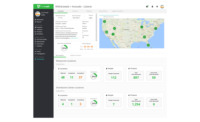Heeding the call for real-time cradle-to-grave traceability

It’s both ironic and tragic to begin an article on the benefits of cradle-to-grave traceability during one of the most extensive frozen food recalls in several years. But, as of this writing, fears of potential listeria contamination are fueling the recall of millions of frozen fruits and vegetables in more than 400 different products and 40 different brands sold throughout North America.
The unfortunate consequences—and, of course, costs—of such a massive recall are literally staggering. So are the traceability challenges. Some of the recalled products date as far back as 2014, and since these particular items are frozen, thousands of consumers (maybe even hundreds of thousands) are likely to have them in their freezers with no knowledge of their potential danger.
The situation is unquestionably tragic and reconfirms how critical it is for every provider in the food supply chain to have an end-to-end traceability program in place. And, when refrigerated and frozen foods are involved, the need is even greater because the potential for spoilage is as great as well.
HACCP and GFSI standards both require refrigerated food processing facilities to have a temperature monitoring system, in addition to a number of other processes that ensure product quality and safety. But, from a traceability standpoint, unless a company can provide cradle-to-grave transparency in real-time, the potential for error still exists regardless if an established safety program is in place or not.
What’s more, advancements in the study of whole-genome sequencing in food bacteria now make it possible to pinpoint the source of a foodborne illness more specifically. While such advancements are good news for the industry and its consumers, they also raise the bar for food companies. Better identification abilities also create a higher probability for more food recalls in the future, as well as for tighter compliance standards.
Managing costs through seamless traceability
No food company can be certain how much a food recall will actually cost, but a joint study by the Food Marketing Institute, Arlington, Va., and the Grocery Manufacturers Association, Washington, D.C., sets $10 million as the average.
But, if (or when) a food recall actually occurs, the ability to ensure real-time cradle-to-grave traceability makes it possible for a food company to keep its response within the scope of the actual contamination problem. Conversely, if total traceability can’t be assured, the only solution is to recall every product with the potential to cause harm. The result can literally make the difference between recalling millions of products that are perfectly fine, or keeping them on the market for consumption.
The FDA and USDA each require cradle-to-grave traceability, both backward and forward. Yet, without the ability to ensure that a company’s traceability reports are in real-time, the margin for error increases significantly. People make mistakes. Different departments often work in silos. Manual records may not be up to date. The list goes on.
But, when the right safety compliance processes are fully integrated into a customized ERP software system, food manufacturers now have the ability to access the information they need in real-time, both inside and outside of the enterprise. With real-time capabilities, companies can accurately:
· Identify where every item came from
· Pinpoint where it currently is in the production process
· Identify where every item went
· Confirm what safety processes were performed
· Report all corrective actions that were taken
· Accurately identify and isolate all potentially contaminated products
· Protect the company’s bottom line—and brand.
To verify the accuracy of reports, companies must also have a complete batch history of every ingredient used, its source and when it was actually brought into the production process. The reports must also include all pertinent inspection information, even the names of those responsible for each critical task.
The ability to identify every item, every process and every person responsible for ensuring safety at each critical checkpoint is the only way a company can provide cradle-to-grave traceability. The ability to do it in real time is the only way to ensure all reports are accurately up-to-date, regardless of what the concern may be.
Looking for a reprint of this article?
From high-res PDFs to custom plaques, order your copy today!




